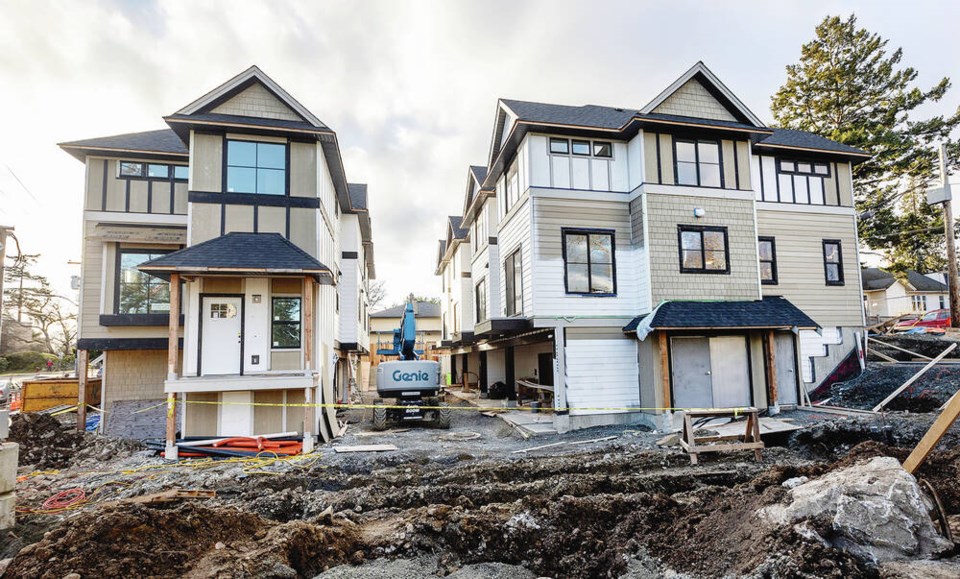Esquimalt is looking to speed up development by giving the township’s head of development services the power to approve certain permits.
Council is considering delegating approval of development permit applications for up to six housing units on one single lot as well as minor development variance applications to township staff.
On Monday, council agreed in principle on a bylaw change that would see processing time for some development permits cut by more than half.
It will be tweaked again before it returns to council.
Bill Brown, director of development services, said staff are working to address concerns about them having the ability to approve a 25 per cent variance in building heights and parking lot sizes. “If you have a 10-storey building and they want a 25 per cent variance [increase], that’s another two and a half floors.”
As the bylaw stands, minor variances are those that would would not change building height, coverage, setbacks, and public parking requirements by more than 25 per cent.
Minor variances cannot result in “inappropriate” site development, such as developments that would create adverse affects to the environment or substantially affect use and enjoyment of nearby lands.
Minor variance applications for fence heights and well as sign coverage would be covered under the proposed bylaw.
Brown said that Esquimalt has received just eight variance permit applications since May 2023, five of which would have been considered a minor variance.
And only about six small-scale multi-unit housing project applications come to Esquimalt each year, he said.
“The province has set a very, very clear message that local governments must speed up housing approvals,” he said. “We are doing this in our own made-in-Esquimalt method that complies with the goals of the province.”
Large variance applications, such as a 26-storey apartment proposal from GMC Projects, will still go before council, Brown said.
Mark Holland, a Vancouver Island University professor of planning and real estate and a planning consultant who has helped several housing projects win approval in Esquimalt, said that this move shows that Esquimalt is serious about pursuing more housing.
A few years ago, only a handful of B.C. communities, such as Vancouver, Langford and the Comox Valley Regional District delegated permit approval powers to staff, he said.
The move to slim down these processes isn’t aimed at eliminating community input but rather towards increasing efficiency in the development process, he said.
Holland stressed that the development permits are being reviewed by planners and engineers and that applications will have to conform to Esquimalt’s official community plan, which was created with citizen input.
“These people are professionals, trained and educated,” he said. “Their jobs are on the line so they’re going to make sure they follow council policy.”



